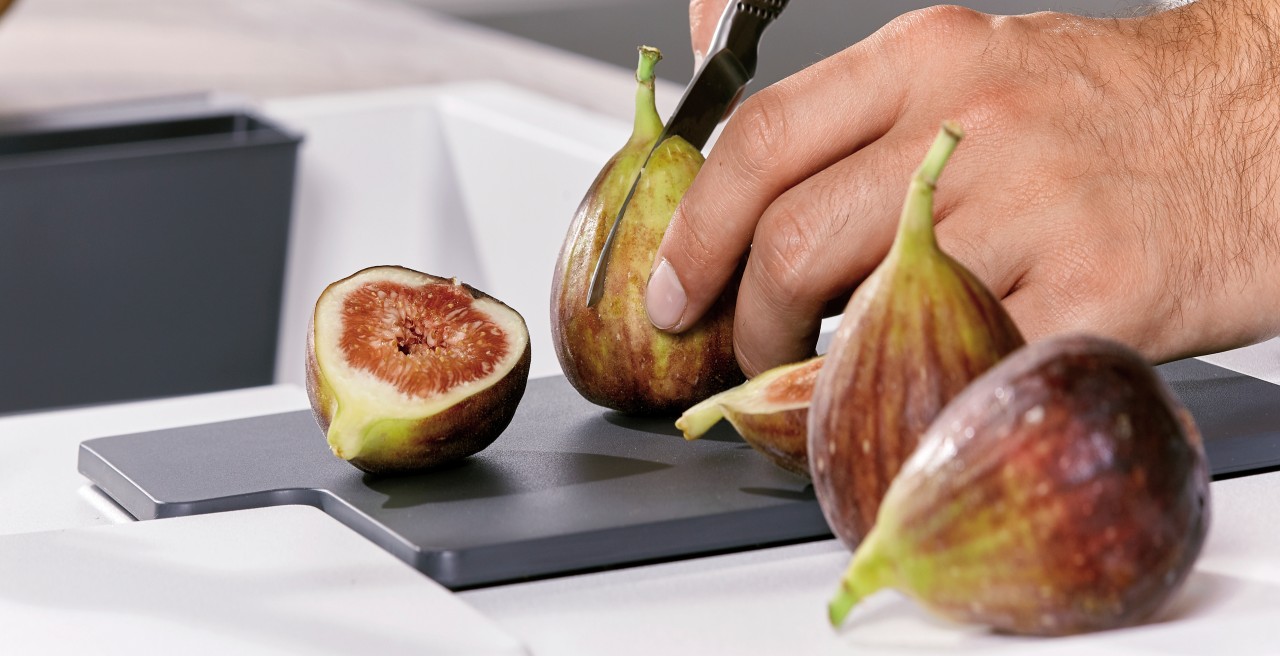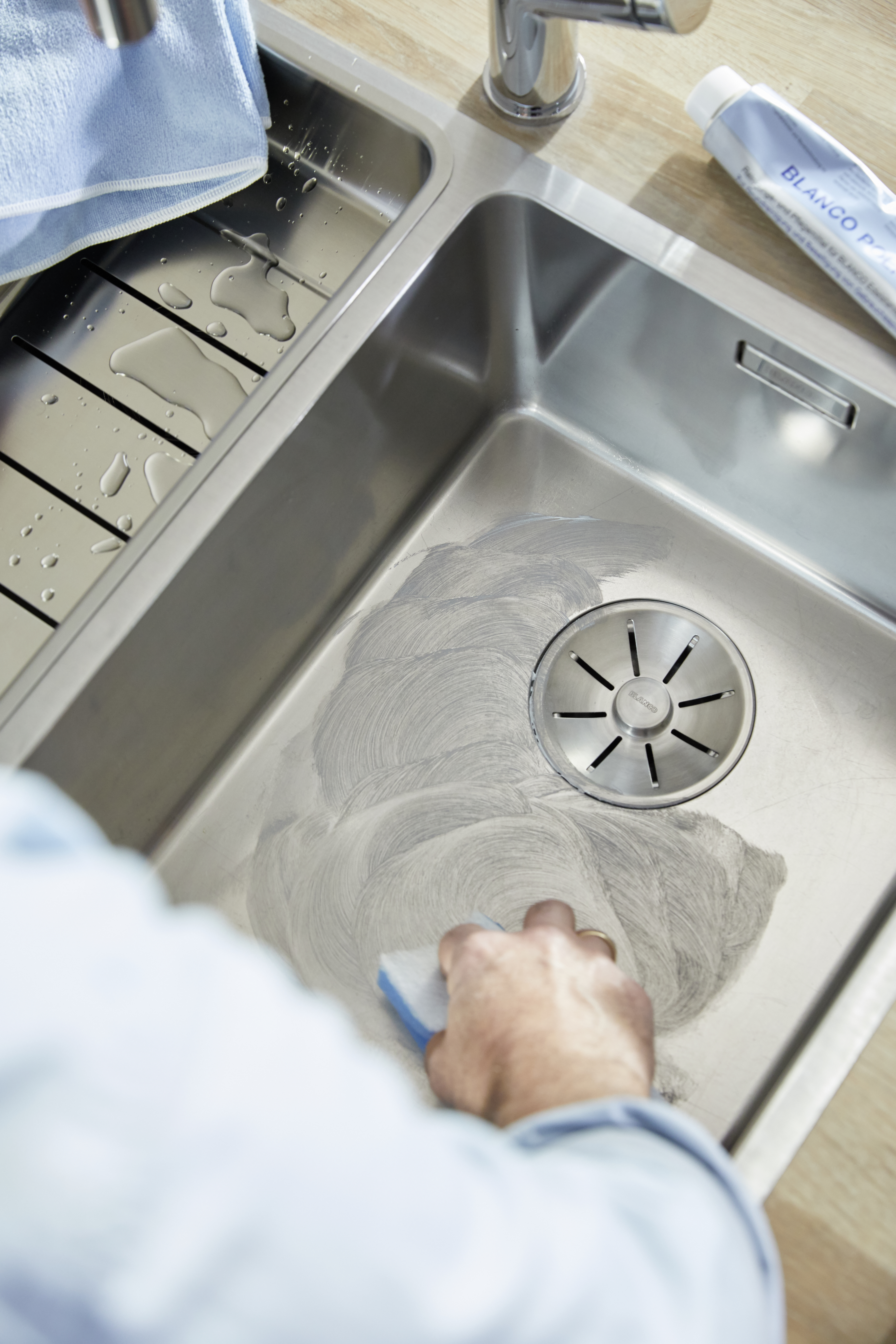Keeping your white sink white
Our tips & tricks
Cleaning a kitchen sink is one of those chores that needs to be done every day. It doesn’t really matter what kind of sink you have. Whether it’s stainless steel, ceramic or Silgranit, the daily cleaning routine is always the same. A damp sponge, a little rinse, wipe off and then wipe dry. Voilà! But is this process really the same for all materials and colours? How can I ensure that a white sink will stay white long-term?
Treat all sinks the same for your daily cleaning routine
It makes no big different whether your sink is made of stainless steel or whether you have a glossy ceramic sink or a white Silgranit sink. When it comes to daily cleaning in the kitchen, all materials are treated the same way. It doesn’t take long and allows you to integrate cleaning up the kitchen into your evening routine with no trouble at all. The sink is all wiped clean in less than two minutes. It’s best to use a soft sponge and a little washing-up liquid for this purpose, plus a microfibre cloth to rub it dry. If your local water is hard, the droplets of water that evaporate from the sink bowl after you wash up can leave a thin layer of limescale behind over time.
How to combat limescale in the sink
Chalk is a naturally occurring component of our tap water. The degree of water hardness for the local area indicates how much calcium and magnesium is contained in the local water network. If the degree of hardness is between 1 and 4, you have very soft water. The higher the level, the more limescale can end up being deposited on the sink when droplets of water evaporate.

White or pale sinks are particularly suitable for an area with hard water, as every single chalky droplet won’t be immediately apparent on the surface of a coloured sink. However, the downside is that this layer of limescale can still adhere to the sink material over time and become discoloured.
You won’t have to be constantly wiping a white sink dry, but without regular deep cleaning the sink can still acquire a discoloured coating. As such, you should clean even an apparently clean sink at regular intervals.
How to get your sink sparkling again
To give a white sink a deep clean, it’s best to remove limescale with a vinegar- or lemon-based cleaner at regular intervals. Both standard cleaning products work very well indeed and break down naturally. You should ensure that your cleaning product isn’t too aggressive and is compatible with food. For that reason, be sure to avoid any cleaning products that contain chlorine.
If the layer of limescale has been sticking to the sink for a long time, you may need to use a stronger product. Of course, BLANCO Customer Service can recommend tried and tested products for deep-cleaning Silgranit sinks.This will remove limescale deposits from your sink, leaving it gleaming white again.
Professional cleaning needed?
In addition to daily cleaning habits, you'll find the selection of professional deep-clean products specified on the different materials of your kitchen waterplace.



